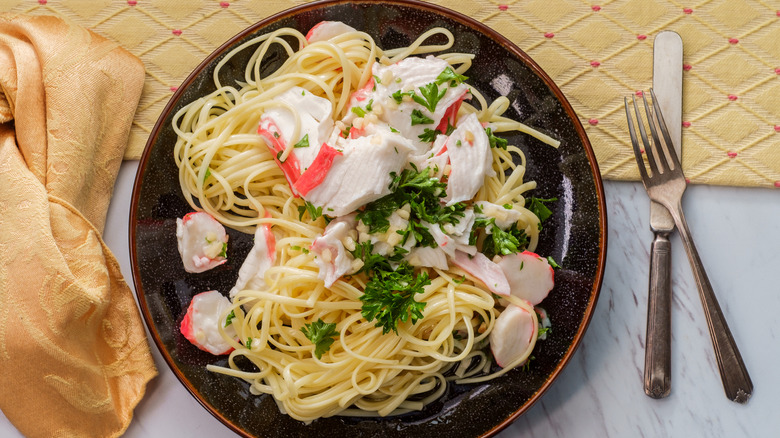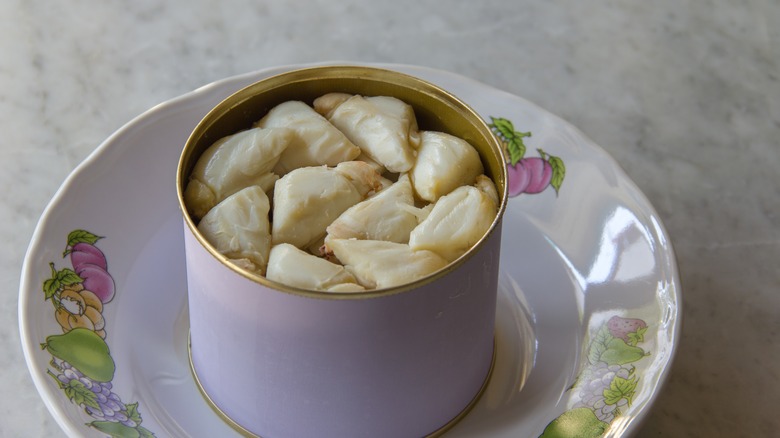The Simple Canned Crab Meat Mistake You'll Want To Avoid
Canned crab meat is a fantastic affordable alternative to fresh crab. However, for its deliciously sweet flavor to truly shine it must be prepared in the correct way. If the dishes you've whipped up with canned crab meat aren't passing muster, you may have made the mistake of using the flesh directly from the can without rinsing and drying it first, much like you'd use a tin of tuna or salmon. While canned crab is packed in a brine that combines salt, sugar, flavor enhancers, and preservatives — just like canned fish — each nugget of protein tastes better when washed under cold running water. Moreover, the segments are chunkier and easier to separate than flaky tuna.
Rinsing the flesh and patting it dry will help remove as much brine as possible from the crab, and this is a vital step for three reasons. Firstly, it removes the extra sodium on the surface of the meat, which is essential if you're monitoring your salt intake. Secondly, it prevents the salty packing liquor and preservatives from infiltrating and overpowering the flavor of your crab dishes — you retain full control over the level of seasoning in every element of your recipe. Finally, soaking up any residual salt on the surface of the meat by drying it with a paper towel improves its texture by eliminating excess moisture that can otherwise give the crab an unappetizing mouthfeel.
How to rinse and dry canned crab
Drain the brine from your can of cooked crab meat before placing the flesh in a mesh sieve (try to use one with a fine mesh to prevent smaller shreds of crab meat from falling through the holes into the sink). Then rinse it under a cold running faucet, taking care to turn the crab meat gently with your hands to ensure as much of the sodium washes away. You can do this with a fork too but using your hands means you can easily feel for any small bits of hard shell or cartilage that have accidentally been packed into the can. Indeed, there's nothing worse than biting into a crunchy shard of shell while enjoying an otherwise perfect serving of crab ravioli.
Dry the meat by sandwiching the crab between two sheets of absorbent paper towel and pressing down with gentle pressure. This step is vital if you want to use your canned crab in a recipe that has a dry texture, such as Maryland crab cakes. This is because any extra moisture in the protein can affect the consistency of these delectable seafood patties, preventing the balls of wet mixture from clumping together and retaining their shape. Drying your canned chunks of meat is particularly useful if you want to roll your nuggets of crab into sushi rolls but it isn't essential, for example, if you plan on simmering the flesh in a seafood bisque.

